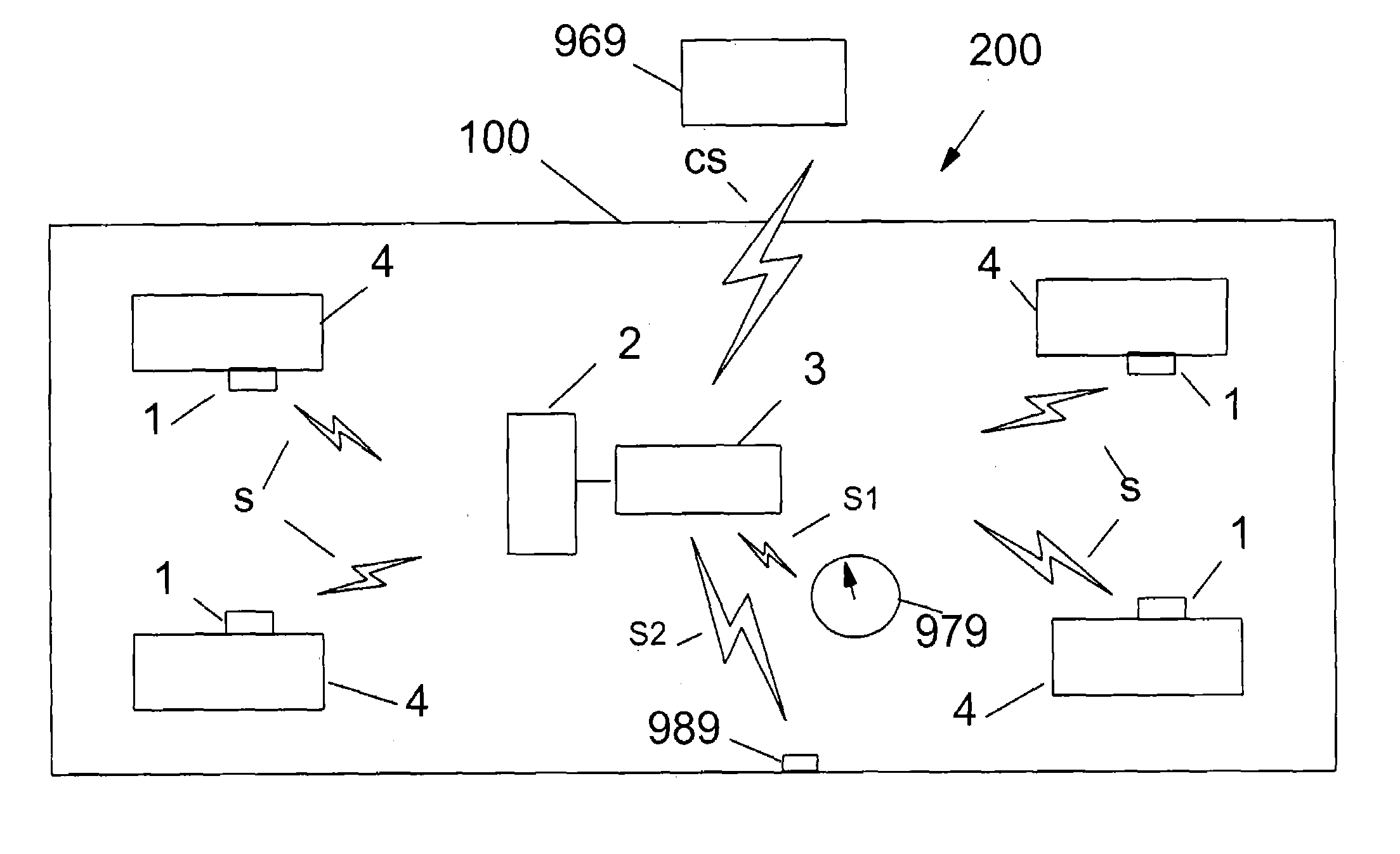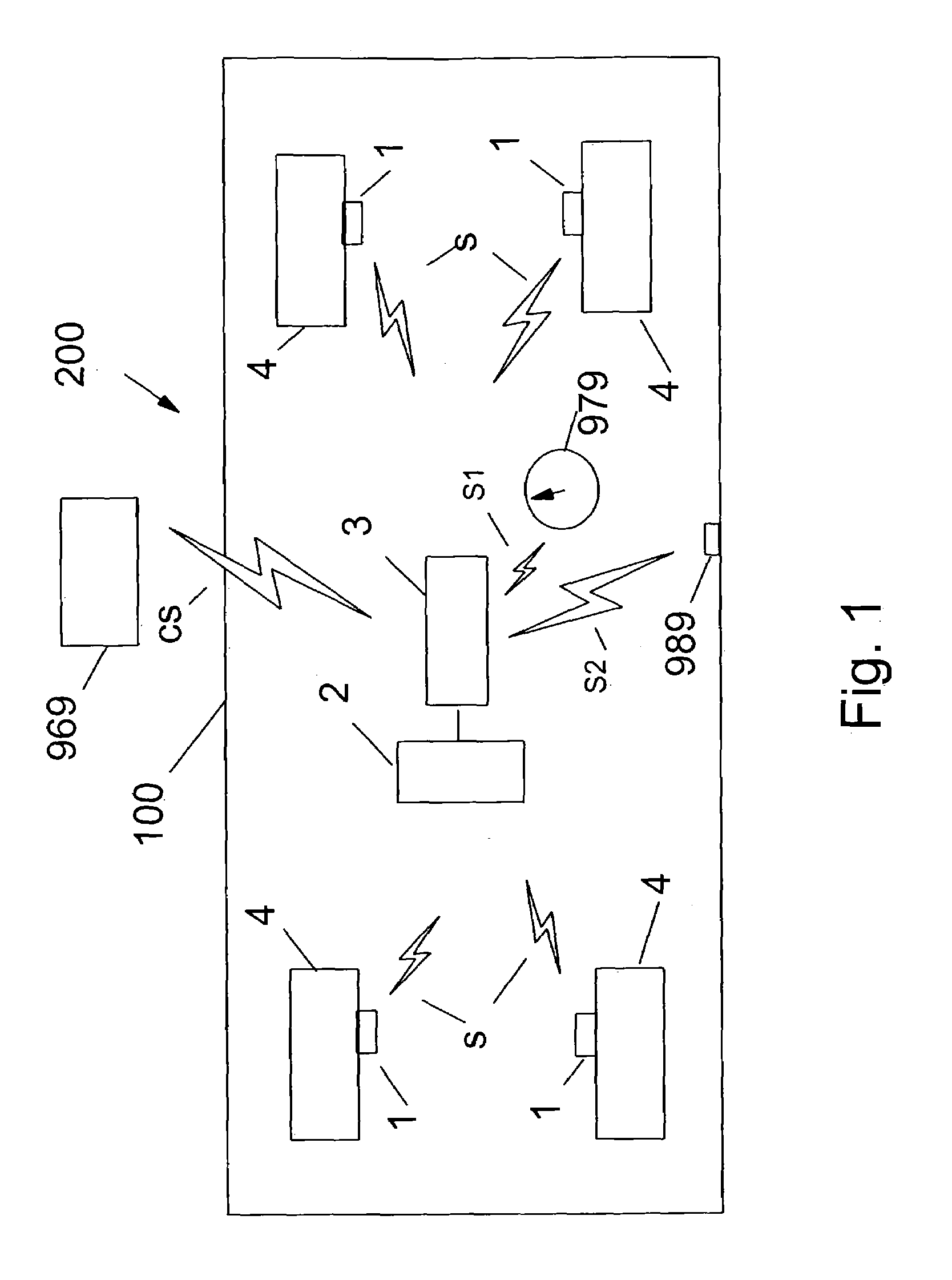Tire temperature and pressure monitoring sensors and systems
a technology of temperature and pressure monitoring and sensors, applied in the field of vehicle tire safety, can solve the problems of increased tire running temperature, reduced tire service life, so as to improve brake adjustment accuracy and methods, prevent degradation, wear and failure, and fine differences in braking effectiveness
- Summary
- Abstract
- Description
- Claims
- Application Information
AI Technical Summary
Benefits of technology
Problems solved by technology
Method used
Image
Examples
example
[0099]9AM—Flat tire-No detection or leak
[0100]9:30—55 mph-bad tire, hot rim or hot air temperature in tire, alarm computed as:[0101]a) high limit i.e. 400° F.[0102]b) relative among tires[0103]c) relative to ambient-each tire[0104]d) relative at speed with history log[0105]e) relative rate of temperature change[0106]f) relative to stored speed / temperature log
[0107]FIG. 8 shows the valve stem 80 in the rim 500. The rim 500 has a hole 501 into which TMS 502 is mounted. TMS 502 can sense rim temperature and / or air 7 temperature and / or pressure.
PUM
 Login to View More
Login to View More Abstract
Description
Claims
Application Information
 Login to View More
Login to View More - R&D
- Intellectual Property
- Life Sciences
- Materials
- Tech Scout
- Unparalleled Data Quality
- Higher Quality Content
- 60% Fewer Hallucinations
Browse by: Latest US Patents, China's latest patents, Technical Efficacy Thesaurus, Application Domain, Technology Topic, Popular Technical Reports.
© 2025 PatSnap. All rights reserved.Legal|Privacy policy|Modern Slavery Act Transparency Statement|Sitemap|About US| Contact US: help@patsnap.com



